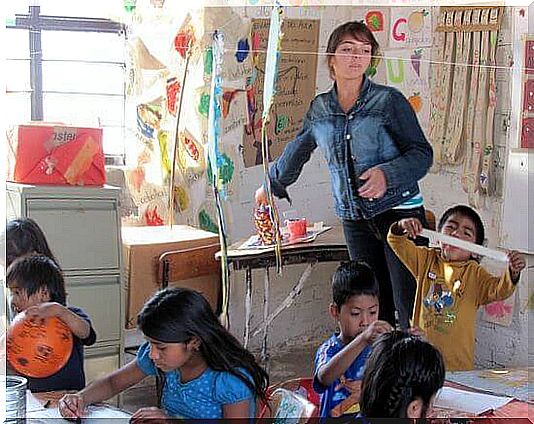Teaching With Emotions, A New And Hopeful Trend

The cold, rigid, unsympathetic and not understandable master classes typical of traditional education would hopefully be coming to an end. Well , a new trend called ” Neurodidactics” is imposed , which consists of teaching with emotions.
These advances are due to studies carried out in 2010 by a group of researchers from the Massachusetts Institute of Technology on adolescents who had electrodermal sensors placed on their wrists in order to measure their brain electrical activity after a week.
In this way, the scientists were unexpectedly surprised after observing the result of these measurements: the student’s mental activity during a conventional class was comparable to that of watching television, that is, it was between low and zero.
Likewise, this research reliably demonstrated that the conservative pedagogical model based on the figure of the passive student who simply limits himself to receiving information and content does not work and, therefore, has become obsolete and out of date. But what other conclusions were drawn here?

Teaching with emotions, a revealing finding
Directors of the Master in Neurodidactics of the Rey Juan Carlos University spoke about it: “The brain needs to be excited to learn . ” With that motto as a flag, different currents that propose a transformation of this archaic educational model began to be evaluated worldwide.
Then, in pursuit of teaching with emotions, Neurodidactics appears precisely, which transcends the mere methodology to finally become a set of knowledge provided from the field of the current neuroscience in relation to various learning processes.
This is how evaluating only the behaviors or the results of the school processes is absolutely meaningless as the focus begins to be placed on nothing more and nothing less than the brain activity of the minors while they carry out their school activities, which really counts. .
Even according to this branch of research, those cases where certain learning difficulties occur are not necessarily related to those syndromes so named today -such as dyslexia, dyslalia, ADHD, etc.-, but rather to school methodology applied.
This conclusion was reached after observing that 50% of the time in primary classes is usually based on transmitting information verbally, while in secondary it occupies 60% of the time, rising to 80% in high school.

Neurodidactics, the science of teaching with emotions
As a result of several and varied scientific studies carried out, these specialists concluded that to absorb knowledge, the brain processes information from the right hemisphere, that is, that linked to intuition, creativity and images.
We can affirm then that the language is not the star in this model that, on the contrary, thus prioritizes the gesticulation (be it facial or body) and the context, with absolute support in all kinds of visual supports (audiovisual material, synoptic tables, conceptual schemes, interactive content, etc.).
What is important about this methodology is also the implication of student participation during the learning process, as well as the value of group work, since the brain is considered a social organ destined to know through interaction with other peers. .
For this reason, it is feasible to presume that it is a radical change and innovation with respect to that traditional method in which the protagonism and the laurels belonged purely and exclusively to the memorization of the data of each subject, as well as to the written exams as a way of evaluating students.
Thus, the order of priority established among the educators who ascribe to the Neurodidactics model is presented as follows: motivation, attention and memory, but always trying to generate an emotional bond with the little ones.
Having developed this hopeful trend that involves teaching with emotions and making its comparison with the traditional model of eminently verbal master classes, we want to know your opinion. Do you think it is more beneficial and effective than the previous method? Did you prefer this type of education for your child?









